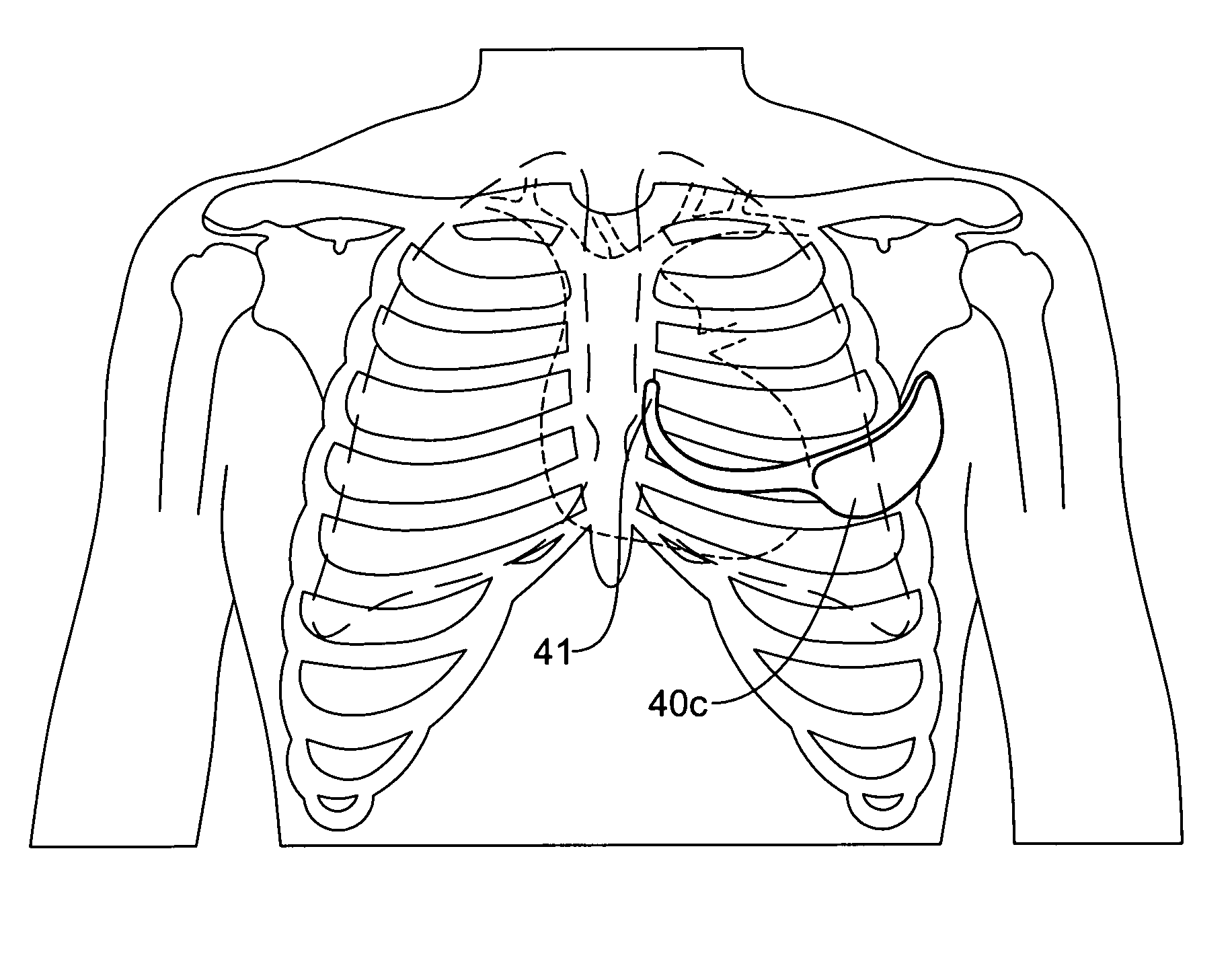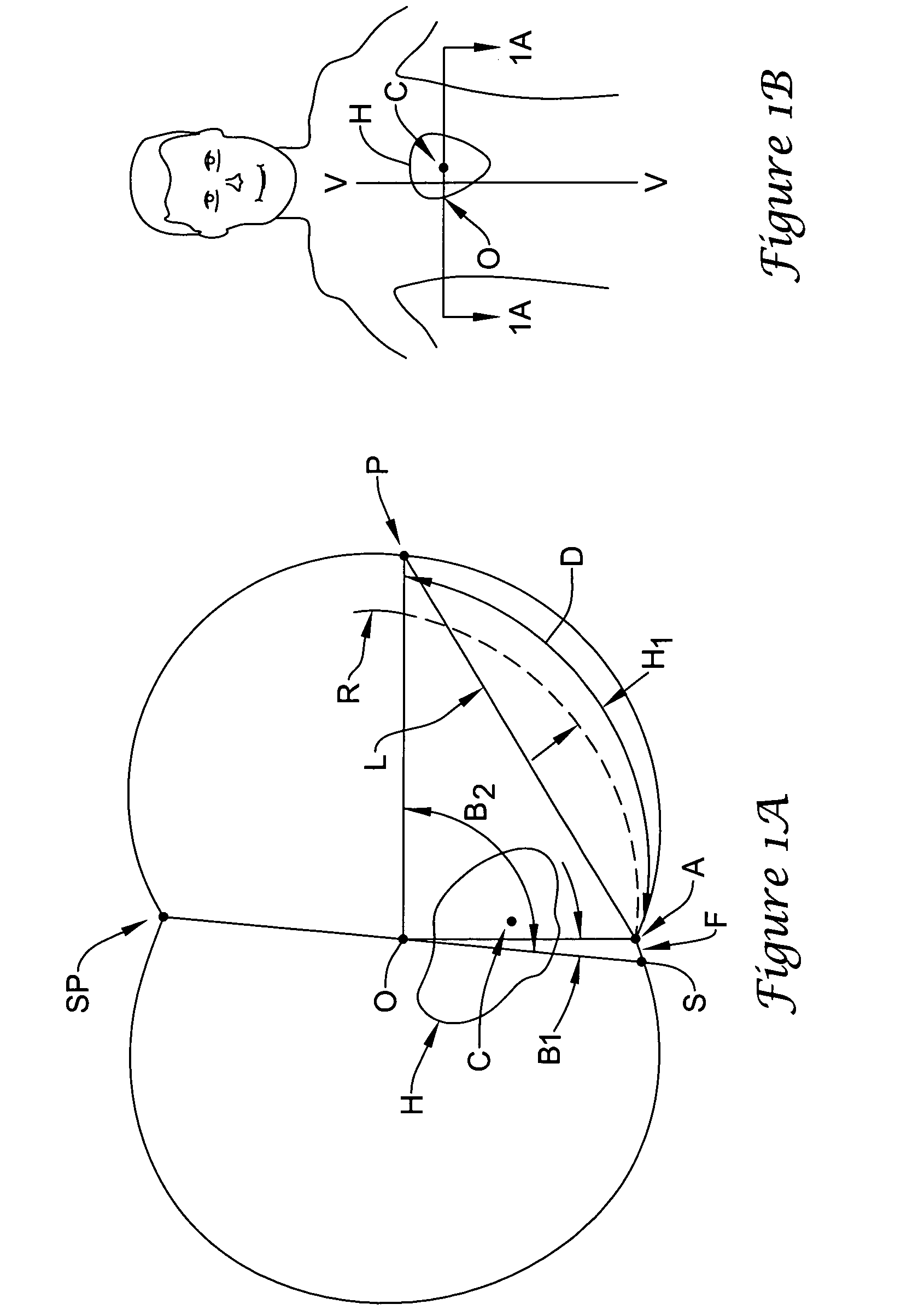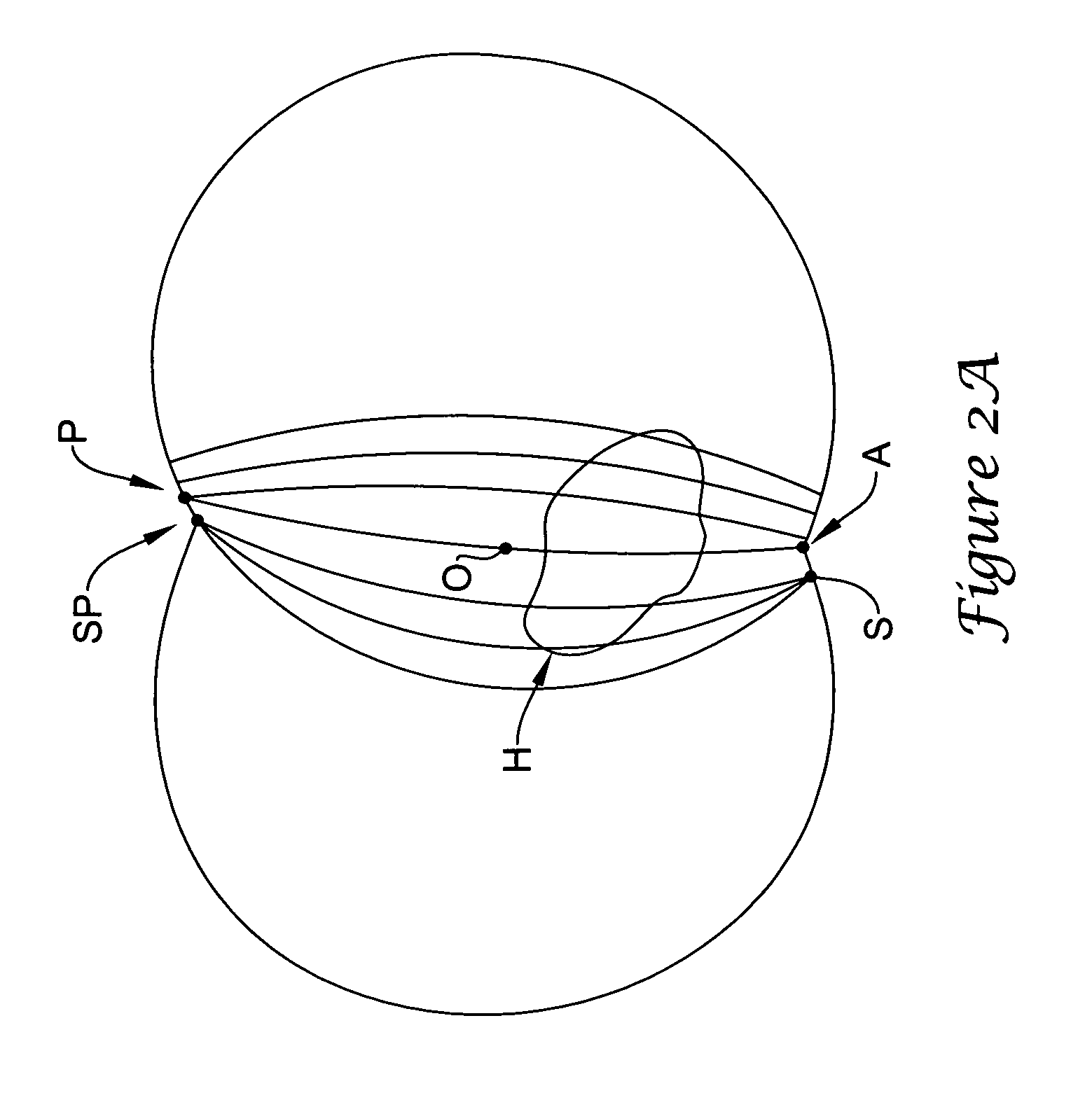Subcutaneous cardiac stimulator with small contact surface electrodes
a technology of contact surface electrodes and subcutaneous electrodes, which is applied in the direction of subcutaneous electrodes, internal electrodes, therapy, etc., can solve the problems of abnormal performance of av nodes, improper conduct of rest, and heart's own natural pacemaker, so as to reduce the resistance of electrode interfaces
- Summary
- Abstract
- Description
- Claims
- Application Information
AI Technical Summary
Benefits of technology
Problems solved by technology
Method used
Image
Examples
Embodiment Construction
[0052]The present invention pertains to a novel device and method for applying stimulation to the heart of a patient. Before the device is described, several terms are first defined. FIG. 1A shows a cross sectional view and FIG. 1B is an elevational view of a standing patient. The heart of the patient is indicated at H as having a center of mass C. FIG. 1A also shows the sternum S and the spine SP. An imaginary line joins points S and SP, having a midpoint O. The vertical axis V—V through point O is defined as the central axis of the patient.
[0053]The present application is concerned with the optimal locations of two subcutaneous electrodes A (for anterior) and P (for posterior). These electrodes are implanted between the skin and the rib cage. As seen in FIG. 1A, electrode A is located as close to the sternum as possible. Its position is defined by the angle B1 between lines OS and OA. Similarly, the position of electrode P is defined by the angle B2 between the lines OS and OP. As...
PUM
 Login to View More
Login to View More Abstract
Description
Claims
Application Information
 Login to View More
Login to View More - R&D
- Intellectual Property
- Life Sciences
- Materials
- Tech Scout
- Unparalleled Data Quality
- Higher Quality Content
- 60% Fewer Hallucinations
Browse by: Latest US Patents, China's latest patents, Technical Efficacy Thesaurus, Application Domain, Technology Topic, Popular Technical Reports.
© 2025 PatSnap. All rights reserved.Legal|Privacy policy|Modern Slavery Act Transparency Statement|Sitemap|About US| Contact US: help@patsnap.com



